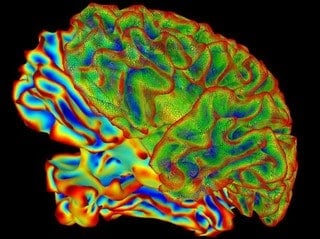One American dies from suicide every 12.8 minutes, making suicide the tenth leading cause of death in the United States according to the American Foundation for Suicide Prevention. There is consensus that if we could better predict who was at risk for suicide, then we could more effectively intervene to reduce this terrible burden on individuals, families and public health.
A new analysis of existing studies strongly supports the idea that there are increased levels of chemicals, called cytokines, in the body and brain that promote inflammation in individuals who are contemplating or have attempted suicide, even when compared to patients being treated for the same psychiatric disorders who are not suicidal.
These cytokines are known to be involved in problems in other body organs, such as the joints (arthritis), the coronary arteries (atherosclerosis) and the lungs (asthma). Studies have long suggested that cytokines are released under conditions of psychological stress and that inflammation in the brain contributes to depression. Thus, the current study suggests that suicide emerges in the context of a relatively greater activation of the immune system than typical stress or depression.
To conduct this work, Drs. Carmen Black and Brian Miller at Georgia Regents University collected and pooled data from 18 published studies, resulting in a combined total of 583 psychiatric patients with suicidality, 315 psychiatric patients without suicidality and 845 healthy control subjects. Their analysis revealed that patients with suicidality had significantly increased interleukin (IL)-1β and IL-6 levels in blood and postmortem brain.
“Our findings contribute to a growing body of evidence that immune system dysfunction, including inflammation, may be involved in the pathophysiology of major psychiatric disorders in some individuals. Specifically, cytokine levels may help distinguish patients with suicidality from patients without suicidality and controls,” explained Miller. “That levels of IL-1? and IL-6 were altered in both blood and postmortem brain supports the robustness of our findings, as changes in the periphery might not be mirrored in the central nervous system.”
The limitation of this study is that the relationship between elevated cytokine levels and suicide may be non-specific, i.e., increased levels may not determine whether a specific person is going to attempt suicide at a specific time. As a result, the ultimate achievement – a specific suicide test – is still a distant goal. However, by identifying biological markers generally associated with suicide, we may be gradually approaching an era where simple blood tests might help doctors predict long-term risk, much in the way that increased blood pressure may predict medical problems years or decades later.
By implication, studies are still needed to evaluate whether controlling inflammation earlier in life has a long-term protective effect. In addition, rigorously designed studies of large and diverse patient samples are still needed to confirm the presence of these cytokine alterations, but if replicated, such findings could contribute to more personalized medicine for patients.
“Inflammation affects every organ in the body. It is increasingly evident that we need to take a long-term perspective on the effects of inflammation on the brain,” said Dr. John Krystal, Editor of Biological Psychiatry. “The path to preventing suicide may be to intervene early in long-term processes that increase the risk for suicide rather than to focus solely on the elusive short-term predictors of suicide.”
Miller agrees and added, “Given that suicide is a major area of public health concern, it is critical to investigate potential markers of suicidality that could be used to assess treatment effectiveness, advance suicide prevention efforts and even help pave the way for future immune-based therapeutic interventions.”
The article is “Meta-analysis of Cytokines and Chemokines in Suicidality: Distinguishing Suicidal Versus Nonsuicidal Patients” by Carmen Black and Brian J. Miller (doi: 10.1016/j.biopsych.2014.10. 014). The article appears in Biological Psychiatry, Volume 78, Issue 1 (July 1, 2015), published by Elsevier.
If our reporting has informed or inspired you, please consider making a donation. Every contribution, no matter the size, empowers us to continue delivering accurate, engaging, and trustworthy science and medical news. Independent journalism requires time, effort, and resources—your support ensures we can keep uncovering the stories that matter most to you.
Join us in making knowledge accessible and impactful. Thank you for standing with us!


If you examine the YAHOO answers under the title of psychology there are a regular number of “questioners” who are threatening to commit suicide. So would-be life-saving idealists would usefully spend some time in giving life supporting answers to these (mostly youthful) doubters.